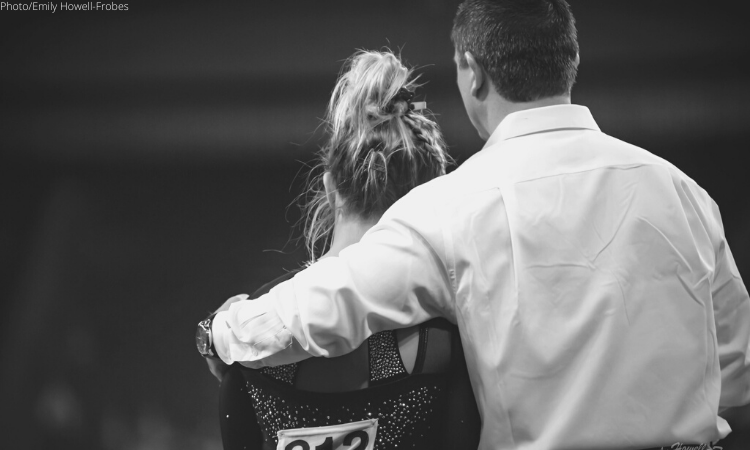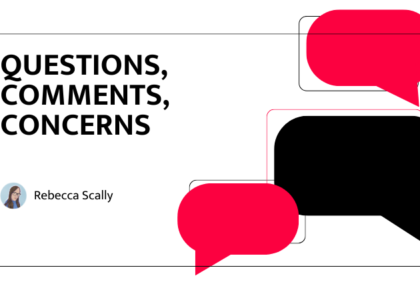I participated in a live fantasy draft this weekend, and I’m in the process of carefully choosing my lineups. I’ve been watching training footage all preseason. I was glued to the Michigan intrasquad on Facebook Live and LSU’s Gym 101. I look forward to week one every winter. The first vault of the first meet of season is a little moment of celebration every year; off on another wild ride until April.
I’m happy to have the relative normalcy of an altered gymnastics season after this chaotic year, but I wonder: at what cost? Why have we decided that college sports simply must go on in the midst of a global pandemic? I understand that the gymnasts want to compete, but it makes me squeamish.
This fall, the Big Ten announced that one-third of its football players who had tested positive for COVID-19 developed myocarditis, or inflammation of the heart. Myocarditis is linked to a number of sudden death cases in young athletes and is not something to take lightly.
On December 12, Florida basketball player Keyontae Johnson collapsed on the court during a game at Florida State and was put into a medically induced coma. He was diagnosed with an inflamed heart possibly related to a previous COVID-19 infection. He won’t play the rest of the season.
In gymnastics, Oklahoma freshman Meilin Sullivan is out for the season with myocarditis. The Oklahoma medical staff caught the inflammation after noting high troponin levels and confirmed via a cardiac MRI, per Sullivan’s mother on social media. Johnson was also diagnosed via MRI.
It’s notable that the NCAA’s return to sport manual links to a flow chart that only lists cardiac MRI as a possible additional testing step for severe COVID cases, rather than a required, routine part of returning to sport after a COVID diagnosis. The SEC follows the NCAA and doesn’t require an MRI to return to sport, which is significant in Johnson’s case.
I’m not a medical professional, but what I take from these two cases is that we don’t yet know enough about the long lasting effects of COVID on anyone—let alone high-performing athletes—to safely hold a gymnastics season. These cases also confirm that young, otherwise healthy individuals can develop potentially fatal heart conditions.
An added wrinkle is hospital availability, for both cases like Johnson’s—where a cardiac event requires someone to be rushed to the ER—and also the more mundane medical concerns, like an ACL or Achilles injury. The numbers weren’t promising, as of December 21.
We’ve also seen that simple COVID precautions, such as wearing masks when not actively doing gymnastics, are not being followed. The problem is widespread. It’s LSU, and Illinois, and Nebraska and on and on.
While it’s fair to argue that the gymnasts themselves are adults and should be following the rules, the root of the problem is that season is happening in the first place. How can we expect student athletes who are being asked to travel to campus, attend practices and travel to compete to perfectly follow rules when the NCAA itself, conferences and athletic departments, aren’t modeling good behavior? Certainly the athletes share some responsibility, but not the brunt of it.
The Big Ten did an about face and started its football season late; it claimed that increased capacity for rapid antigen testing led to the change, but one has to assume the considerable backlash was part of the equation. That felt like the end of anyone in the NCAA choosing to take the pandemic as seriously as it demands to be.
Mike Krzyzewski, perennial basketball powerhouse Duke’s head coach, asked why his sport is happening. Granted, his comments came after a shocking two losses in a row at Cameron Indoor, but his point is a good one. We’ve just decided we’ll play through it. Why? The Duke women’s basketball team decided not to. The student-athletes chose to end their season.
The NCAA is playing games with its athletes’ health for profit. That’s the bottom line.
As happy as I am to have gymnastics to watch and write about come January, I’m fearful. I’m fearful for the health of the athletes, the judges, the facilities staff, the camera crews, the commentators, the spectators if any are allowed, the bus drivers and the families of everyone involved. I hope we make it through the season without any disasters, but the closer we get, the less optimistic I feel.
Is a season of gymnastics worth someone’s life? I hope we don’t have to answer that question.
Article by Emily Minehart
Like what you see? Consider donating to support our efforts throughout the year.





I completely agree with you. I’m Canadian and have to admit I really don’t understand some of the things that are going on in certain areas of the US! I didn’t know if it just me noticing that some ideals and perspectives are very different from our Southern neighbours. My area is in another 28 full lock down and so many things are cancelled and our hospitals are reaching capacity – and this is even at infection rates lower than many areas in the US. I love college gym as well but I really don’t understand how anyone thinks this is worth the risk.